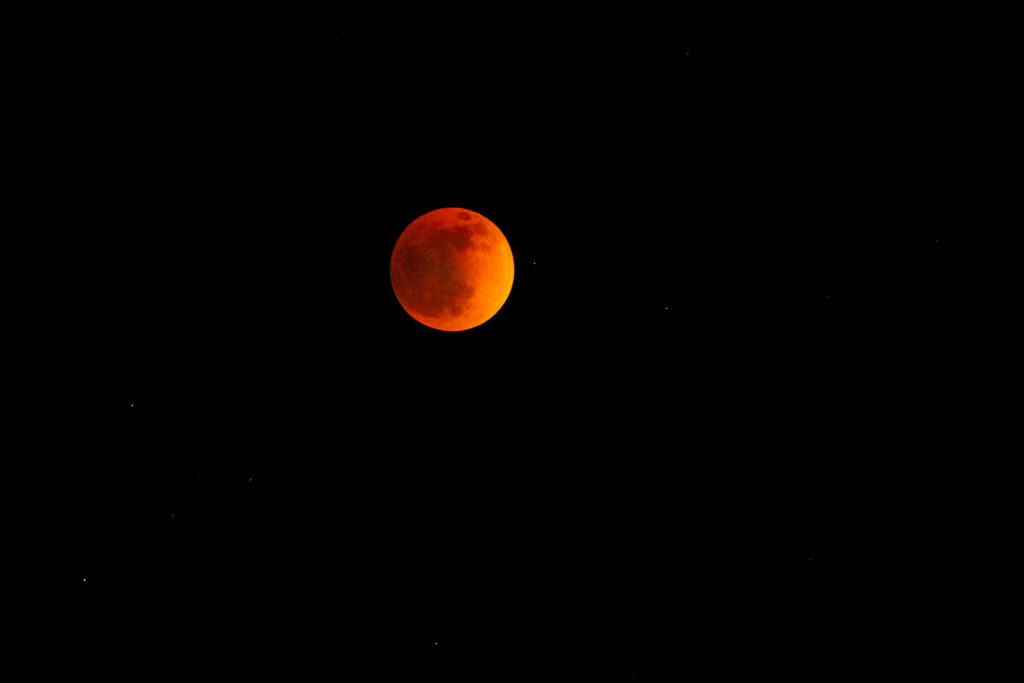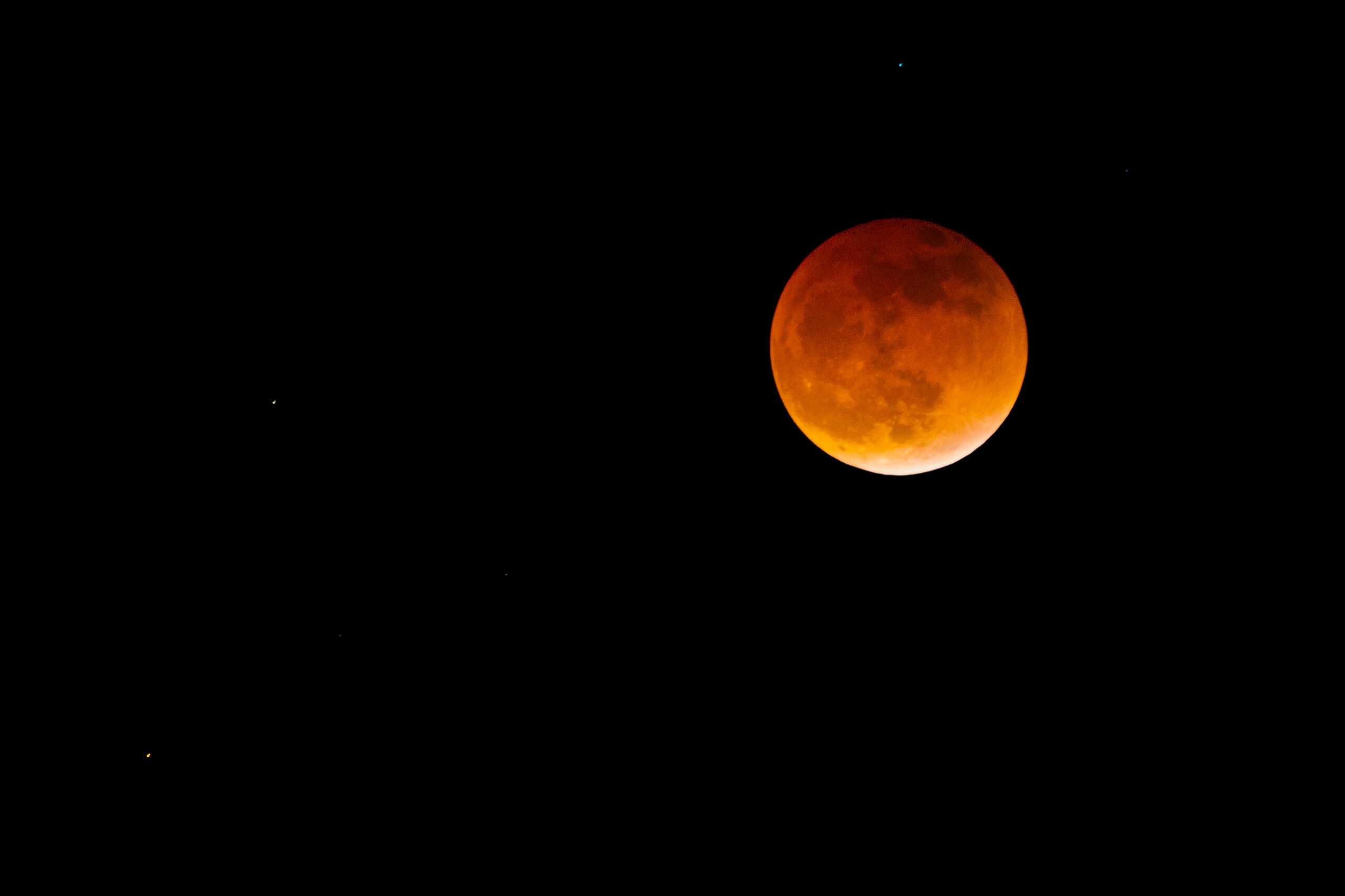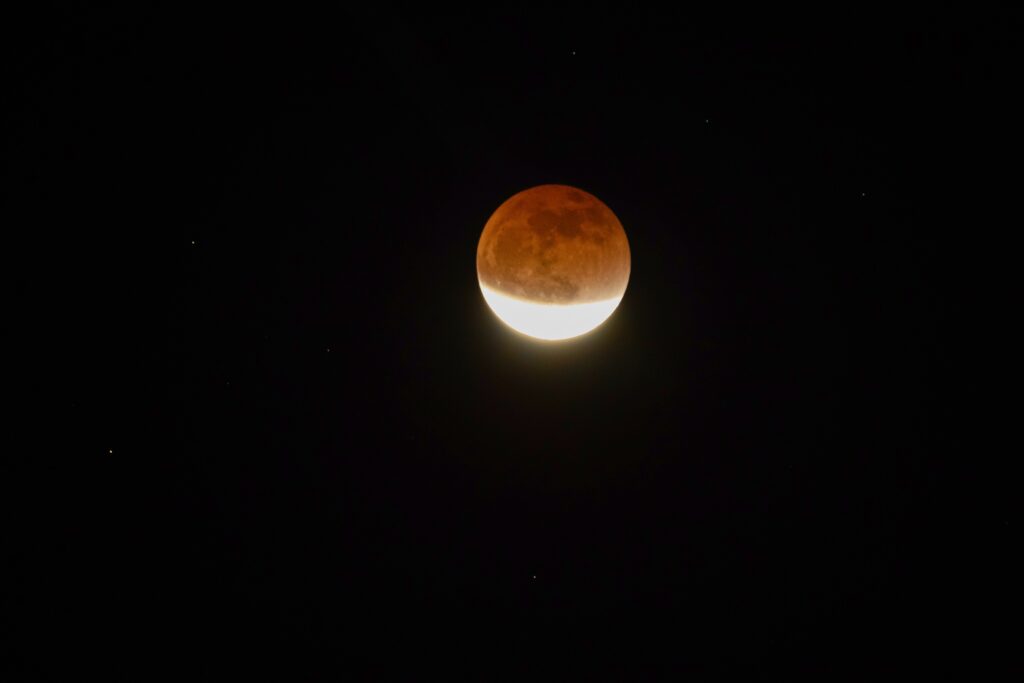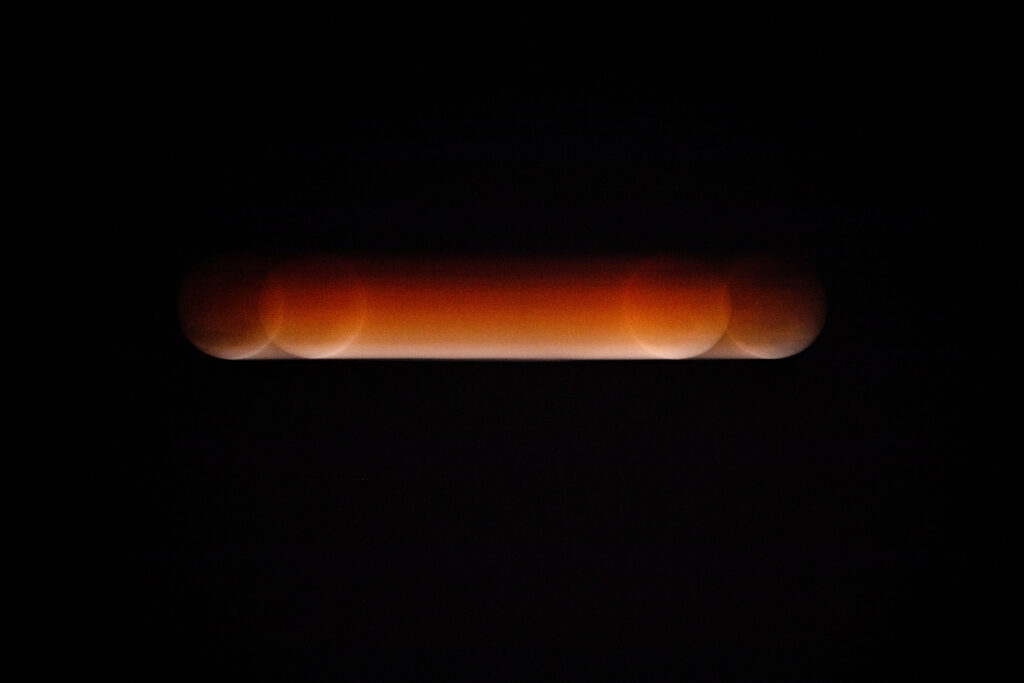“Blood Moon” – Total Lunar Eclipse 2022

A total lunar eclipse is sometimes called a Blood Moon, because of the reddish tinge the Full Moon takes on when fully eclipsed. The term is also frequently used to describe four total lunar eclipses that occur in a row.
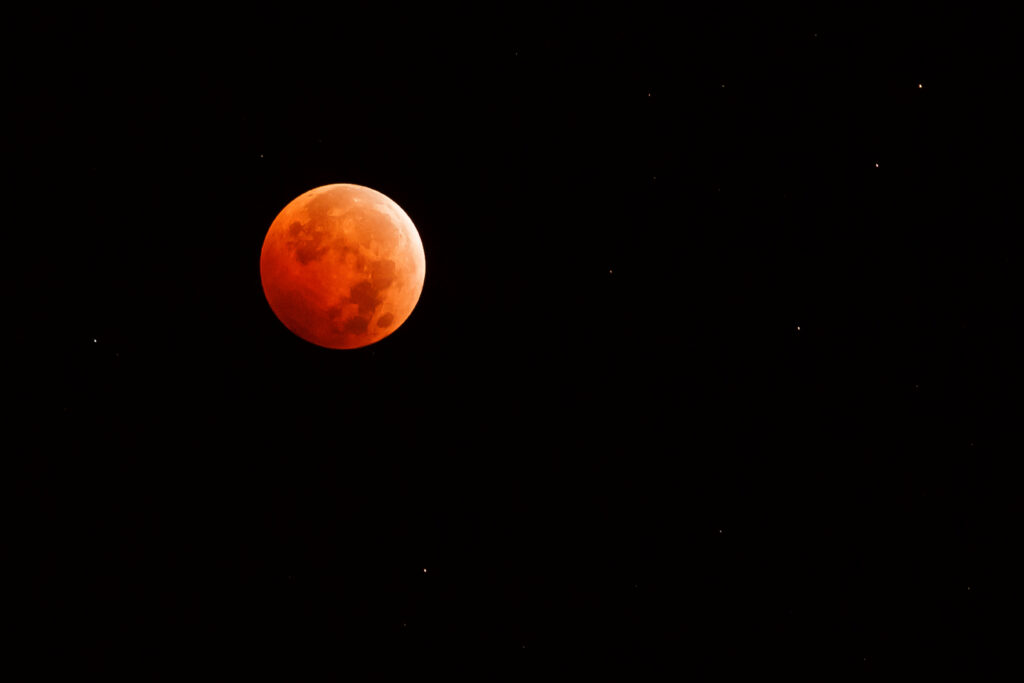
Blood Moon is not a scientific term, though in recent times it is being widely used to refer to a total lunar eclipse because a fully eclipsed Moon often takes on a reddish color—like in the image above, which was taken during the total lunar eclipse in October 2014.
So, why does the Moon turn red?
A total lunar eclipse happens when the Moon travels through the Earth’s umbra and blocks all direct sunlight from illuminating the Moon’s surface. However, some sunlight still reaches the lunar surface indirectly, via the Earth’s atmosphere, bathing the Moon in a reddish, yellow, or orange glow.
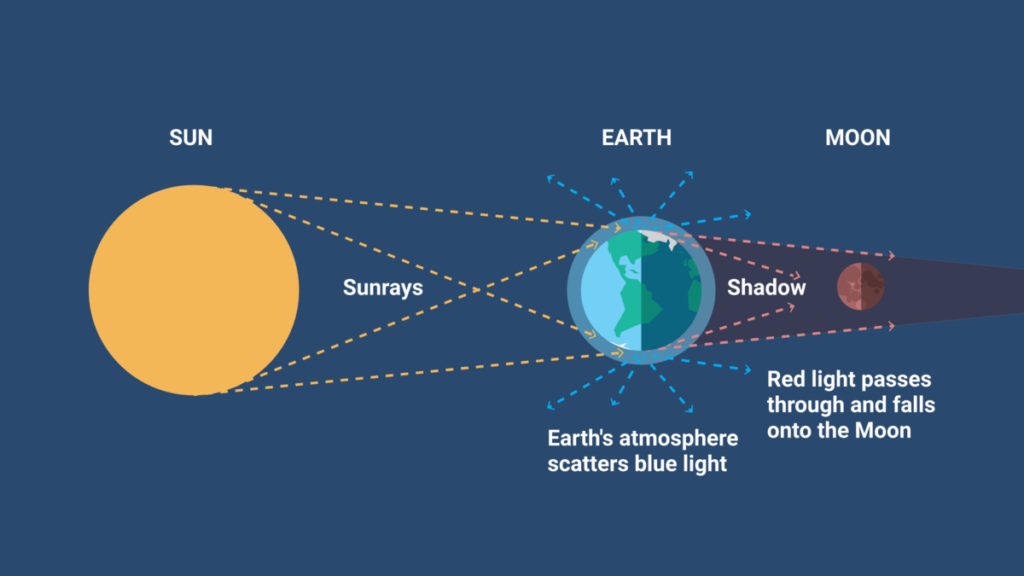
As the Sun’s rays pass through the atmosphere, some colors in the light spectrum—those towards the violet spectrum—are filtered out by a phenomenon called Rayleigh scattering. This is the same mechanism that causes colorful sunrises and sunsets. Red wavelengths are least affected by this effect, so the light reaching the Moon’s surface has a reddish hue, causing the fully eclipsed Moon to take on a red color.
This total lunar eclipse occurs close to the Moon’s perigee—the point in space when it’s closest to the Earth during its monthly orbit—which will make the Moon appear about 7% larger than average.
If prime time is defined as the period between 8 p.m. and 11 p.m. then this eclipse will produce the longest prime-time totality this century for observers in the Pacific Time Zone.
There are actually two total lunar eclipses this year, with the next one 145 days later on November 7-8, 2022. Weirdly that also features an 84-minute totality (it’s actually four seconds longer). That’s highly unusual. In fact, according to Timeanddate.com, it’s the most balanced pair of lunar eclipses in 430 years.
